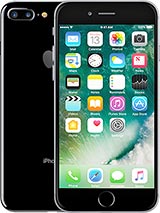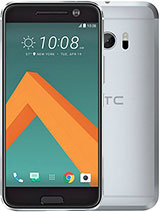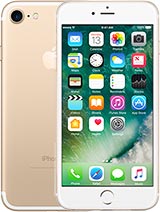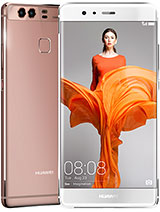Sony Xperia XZ: Time-saver edition
Time-saver edition

Introduction
The Xperia XZ is Sony's latest flagship smartphone. It comes with an improved camera, due specs update and a refined design. You could think of it as an Xperia Z6, but for Sony, XZ is where it's at.
The XZ has a lot in common with the Z5. The amount of RAM (3GB) and same display size (5.2"). The competition is already cracking a condescending smile. However, the rest is on par with the rivals with a Snapdragon 820 chipset, 23MP camera, Type-C connectivity and stereo-speakers, just to give you a taste.
First, let's check the at-a-glance list of Sony Xperia XZ's main strong points.
Key specifications
-
5.2"1920x1080 pixels -
23MP 2160p -
2.15GHz Snapdragon 820 -
3GB RAM 32/64 GB memory -
2900mAhLi-Ion
But would you care about the not top-charting amount of RAM? We're yet to see tangible proof that the RAM race leads to actual usability benefits, but if people were to reason that way, the industry would sit still.
What's more important to us is the lack of fingerprint sensor for the US-bound version of the Xperia XZ. The hardware is there, apparently the paperwork isn't, so Sony can't offer the feature on the US market. We do have it on our international version review unit, and we'll test it for the rest of you to know
Design and build quality
There's no other way around it - the Xperia XZ has the exact same footprint as the Xperia Z5, safe for the 0.8mm extra thickness. However, the design has gone through Sony's traditional iterative process including refinement and polishing.
The result is more than mixing the camera and sensor positions. Now, the Xperia XZ is still mostly a rectangle with sharp corners - some things will never change. If anything, the corners have gotten sharper. The design is a stylish mix of sharp edges and smooth curves throughout.
There are three distinctive materials at play here - glass on the front (an unspecified generation Gorilla Glass), polycarbonate on the frame and ALKALEIDO metal on the back. The latter is a type of aluminum alloy.
Sadly, the Xperia XZ is a fingerprint magnet. Nevertheless, we still salute Sony for managing to keep the phone unafraid of water.
In terms of space management, the Xperia XZ is typical Sony - ample bezels all around, but especially above and below the display. Sure, there are the stereo speakers to somewhat make up for them, but still we feel that shaving a millimeter or two wouldn't hurt.
The control layout is typical Sony too. The fingerprint reader/power button is on the right, a little bit above midpoint and it's easily accessible.
On the left side, you'll find the card slot. Our unit takes one nano-SIM card and a microSD card, but a dual-SIM model will be available with a shared slot between the second SIM and the microSD.

The top panel has the secondary mic and (thankfully!) a standard 3.5mm jack. Certain manufacturers tend to think that it may no longer be needed but we'll have to disagree.
Display
We mentioned earlier that the Xperia XZ's display size stays at 5.2" and 1080p resolution. This results in a pixel density of 424ppi - still plenty sharp.
Brightness and contrast are excellent, too. The maximum brightness of 502nits in manual mode goes as high as 608 nits in auto mode, with bright light shining into the XZ.

Where the display comes short is color accuracy. The average DeltaE of 5.8 is decent, but there is a pronounced blue cast to white and gray. Other than that, out of the primaries, green is off the most (DeltaE around 10), and cyan is far from the truth as well.
Lastly, sunlight legibility is superb. It is on par with the iPhone 6s, and a little short of the iPhone 7 when it comes to contrast under direct light.
Screenlight legibility is awesome, and you won't have trouble using the phone outdoors on a bright, sunny day.
Battery life
The similarities with the Xperia Z5 continue in the battery department. The Xperia XZ manages power using the same 2,900mAh battery. It's comparable to the direct competition safe for the HTC 10 and Galaxy S7, which have slightly larger battery packs.
The handset also supports the Qualcomm QuickCharge 3.0 (and, of course, 2.0), but we're not sure if it will come bundled with a charger to match. If this is important to you, make sure to ask before buying the phone.
As for our battery endurance test, the Xperia XZ proved to be excellent at voice calls and an otherwise balanced performer in the other disciplines. Web browsing over Wi-Fi depletes the Xperia XZ's battery in just over 9 hours, whereas in 5 hours of web browsing the Xperia XZ calls it quits.
In looping our test video until the battery is down to 10%, the Xperia XZ lasts for 8 and a half hours, pretty much the same as the X Performance.
Coupled with frugal standby power consumption, the above numbers add up to a combined endurance rating of 72 hours. Of the above competitors only the Galaxy S7 edge manages to top that (98h), the HTC 10 stands at 66h, while the iPhone 7 and LG G5 score 61h and 60h, respectively.
To remedy the situation, Sony has included a lot of cool battery technologies in the Xperia XZ. One of them is the Qnovo adaptive charging. The technology allows the phone to monitor the cell's electrochemical processes in real time and adjust charging parameters accordingly. This improves the battery longevity.
On the software side, there's Battery Care and Stamina battery saving feature. The former notices charging patterns and makes changes for an even longer life of the battery. The Stamina gives you two modes, each one disabling features of the phone to cut down on battery usage in situations where you need to maximize battery life.
Audio
The Sony Xperia XZ has front-firing stereo speakers, just like every Sony flagship since the Xperia Z2 (and some recent midrangers too). In principle, we'll take this setup over any other in a heartbeat, but Sony's speakers are fairly modest in terms of loudness, falling in the Below average category in our test. None of the major competitors truly excels here, yet they are all ahead of the Xperia.
The Sony Xperia XZ delivered excellently clean output when used with an active external amplifier, getting top marks across the board. Its output loudness was just above average so it’s a very decent performance overall.
Photo camera
The 23MP primary camera of the Sony Xperia XZ is familiar from existing Sony high-end models, but in some aspect it's better than any of them. The sensor is the same custom one used in the Xperia Z5 and is 24.8MP. Depending on whether you shoot in 4:3 or 16:9 aspect ratio, different portions of the sensor are used and you get either 22.8MP or 20.1MP images, respectively, and never the full 24.8MP. Hence the official 23MP designation.
Another specification to come from the Xperia Z5 is the 6-element lens. It's an ultra wide-angle 24mm-equivalent field-of-view and a f/2.0 aperture. Historically, flagship Xperias have had no optical image stabilization, and neither does the XZ. Nevertheless, Sony's SteadyShot with Intelligent Auto has been upgraded, and now offers 5-axis image stabilization.

There are two modes: Manual and Superior auto. You can judge the samples for yourself below, but the differences are too subtle and pop up in specific scenarios. The way we see it, unless you specifically want to tweak shutter speed, ISO or focus, Superior Auto is the way to go.
The Xperia XZ's camera output is alright. It excels at resolving high-intricacy detail like foliage (and test charts) in good lighting, but that's hardly surprise considering the sheer resolution of the 23MP images. All that detail, however, is mixed up with noise and noise reduction artifacts, which doesn't look good when pixel peeping.






Camera samples: Superior Auto mode
The Xperia XZ is equipped with a 13MP selfie camera, making it the highest-res front-facer on a big-name flagship - Sony gets it. It produces excellent images too, packed with detail and with good dynamic range. It does suffer in less than ideal light, though.
Video camera
The Xperia XZ is the only model in Sony's current lineup to feature 4K video recording - largely a marketing decision, since the Xperia X, X Performance and X Compact all have the hardware to do it. Of course, you get the standard 1080p/30fps and high-speed 1080p/60fps options.
The UI is generally simple and easy to use, but there are a few gotchas. For example, 2160p recording is a shooting mode all in itself. Moreover, depending on the shooting resolution, you have different options in SteadyShot stabilization.
4K video is somewhat soft, but you can still read the gas prices on the gas station sign. There isn't much detail in the shadows, though. The footage is practically noise-free too, and looks really natural.
Software
The Xperia XZ runs Android 7.0 Nougat. However, out of the box you'd likely get Marshmallow.
Sony tends to keep the stock Android look, except for a few gentle touches here and there. The big stuff, like the proprietary Stamina battery saving modes and the home-baked multimedia apps are here as well.
As a result, most of the user interface is kept unchanged from stock Android. Sony has added some convenient apps. For example, the Smart cleaner feature will periodically empty the cache of apps you haven't used in awhile.

Sony has a proprietary backup solution built-in on its latest Xperias. It can backup applications, contacts, messages, phone settings. The backup info itself can be stored in the cloud under your Sony online account, or locally on the microSD card or an external USB device.
Benchmark performance
The Sony Xperia XZ is powered by the Snapdragon 820 SoC like the majority of Android flagships this year. The chipset is not exclusive to the XZ in Sony's lineup either - the X Performance runs on Qualcomm high-end silicon as well.
What sets the XZ apart from all of this year's top-dogs (not exactly in a good way either) is the 3GB of RAM - the rest of the big names have gone with 4GB, with the OnePlus 3 having 6GB of RAM (though it's not actually using all of it actively).
Overall, the Xperia XZ knows it has some serious muscle to flex and does a very good job at that. However, other makers have done slightly better job at optimizing the SoC to their needs. In any case, the Xperia XZ won't leave you waiting.
Wrap-up
The Xperia XZ is at the forefront of Sony's efforts in the smartphone space, there's no doubt about that. It brings back Z-series essentials re-imagined to fit into the top of the revamped X lineup - the blocky rectangular body is now clad in ALKALEIDO; the 5.2-inch display is the same size and resolution, only better; the camera has every known focusing tech built-in, and an extra color temperature sensor
One thing is certain - it's better than the Xperia Z5 in every respect. The battery sees the largest improvement, although it'd be odd to be otherwise.
The camera is also improved, but it just can't live up to our expectations, which are set by other flagship smartphones on the market. It's not a bad camera by any stretch of the imagination, but we're sure Sony is capable of outdoing itself here.
Sony's pricing of its flagship actually makes some sense with the Xperia XZ, for a change. Especially now, a few months after its global release, the price is ought to be lower by a substantial amount.
| Sony Xperia XZ | |
| Pros | Cons |
|
|
Also consider
-
Samsung Galaxy S7 Edge
The curved Samsung flagship also has much longer battery life going for it, but its primary camera has half the pixels of the XZ's. Not to mention Samsung's 5MP front-facer - it's so two thousand and late, says the Xperia's 13MP selfie cam. The Type-C port of the Xperia joins the mock fest, only to be countered by the microUSB of the S7 edge that both adhere to the same USB 2.0 standard, and which type of cable do you have more of?
-
HTC 10
The HTC 10 is another flagship from an aching manufacturer that might have been too pricey at launch. Its price has dropped, making it more affordable now than the Xperia XZ. It may not be ALKALEIDO, but the 10 is made of metal as well, though it can't match the XZ's IP68 rating. It's another case of 12MP/5MP vs the Sony's 23MP/13MP combo. The HTC features a proper USB 3.1 Type-C port, so at least you get faster transfer speeds.
-
Apple iPhone 7
The iPhone 7 is pricier than the Xperia XZ pretty much everywhere, and belongs to a different ecosystem altogether - not a minor consideration. An overall more compact device, the iPhone has a smaller lower-res display, but it's one of the best in business - certainly the most color-accurate. Then there's the more powerful chipset, and the optically stabilized primary camera, though the XZ has the megapixel trump card to throw against it. The XZ has a microSD slot for storage expansion, which is but a dream in the Apple realm, yet it could be essential to some.
-
Huawei P9
As more unorthodox option, one could explore the Huawei P9, again more affordable than the XZ at launch. A different take on the dual-camera, the Leica-branded shooter on the P9 could introduce you to black and white photography, but the phone can't record 4K video. It's also not as powerful, trailing the XZ in most benchmarks, and lacks the protection from the elements.
We've been having a hard time wholeheartedly recommending a Sony flagship recently, for one reason or another. Well, we have it easier with the Xperia XZ - it's the best Sony smartphone yet. Only, we can't help but feel they can, and should, do even better.
Sony Xperia XZ
Total GSMArena score
| Design and build quality |
|
3.0 |
| Display |
|
5.0 |
| Battery life |
|
3.5 |
| Audio |
|
5.0 |
| Photo camera |
|
5.0 |
| Video camera |
|
5.0 |
| Software |
|
5.0 |
| Benchmark performance |
|
5.0 |
| Coolness |
|
4.5 |
Reader comments
- genkeon
- 13 Jun 2018
- uC3
first time sony xperia xz birthday edition












